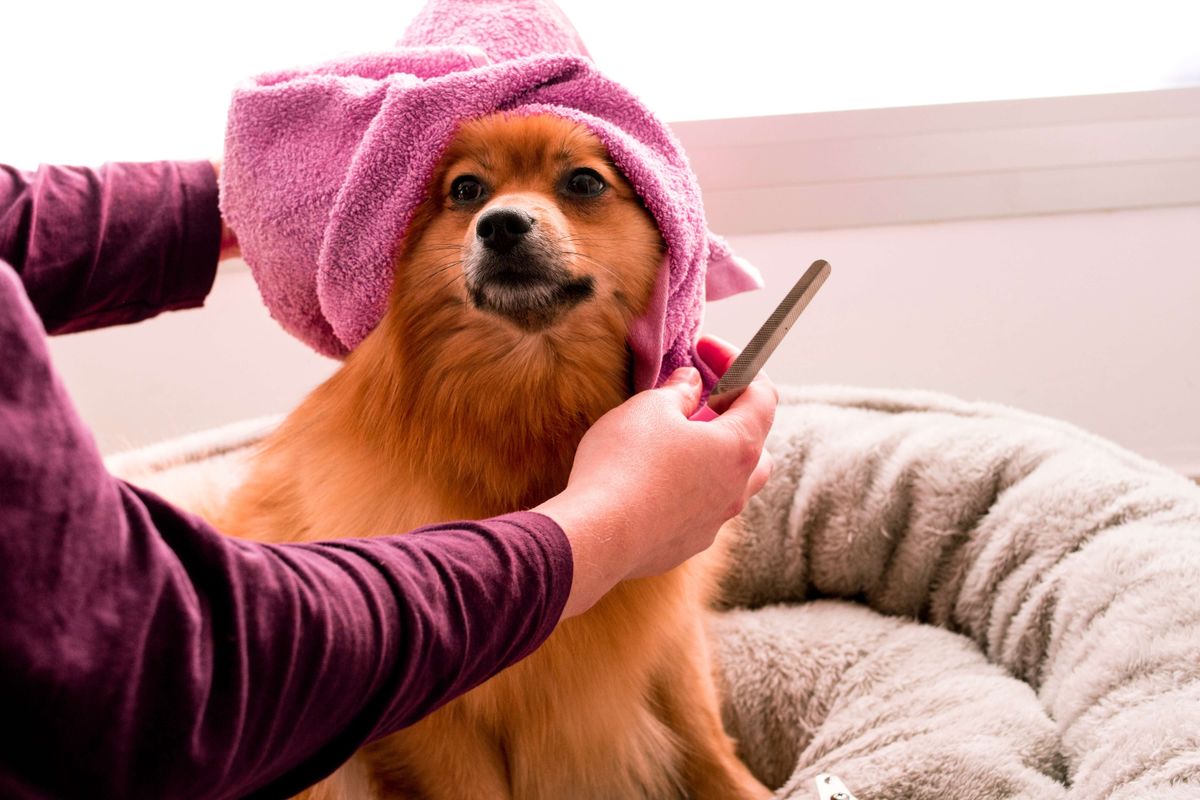Your dog’s fur gets exposed to all kinds of outside pollutants and dirt, making it smell unpleasant. Your dog may also suffer from skin conditions. So keeping your dog’s fur clean is an essential part of pet care.
Dogs with healthy skin and coats still need to be bathed and cleaned to ensure no dirt sticks to their fur, remove loose hair, and maintain shine. Other benefits of bathing your dog include cleaning out the skin and coat to prevent any skin issues. Dogs with skin conditions may have to be washed and groomed frequently as part of treatment or recommendation by their veterinarian.
So, how do you go about keeping your dog’s fur clean? The below guide will outline and take you through the steps to ensure that you’re giving your furry friend a good, thorough wash so that their fur stays clean and fresh.
How Often Do I Bathe My Dog?
Depending on your dog’s needs, you need to bathe your dog whenever it’s necessary. For instance, if you notice that your dog is starting to smell, their long hair is looking more shaggy and tangled, or they’ve gotten a lot of dirt or mud on their coat, these are all solid indications that it’s time for a bath.
You do not want to bathe your dog too often because it can dry out their skin and result in more skin problems. In addition, washing your dog too frequently will strip its skin of its natural oils.
If you live in a warmer climate and your dog often swims in a pool, lake, or pond, this can function like bathing and require fewer baths inside. Just ensure that your dog isn’t swimming in stinky seaweed or murky waters that will get stuck in its fur and need washing.
Bathing 101
If you have a dog that doesn’t like to be in water much, it might be helpful to bathe your dog outside in a tub so you don’t get water everywhere in the house. If you use a tub indoors, just ensure that you let the water drain and not fill the tub as a safety precaution.
Use a canine-safe shampoo when washing. You can ask your veterinarian for good recommendations. You may want to do this, especially if you have a dog with itchy skin conditions or allergies, where a specific brand or type of dog shampoo is necessary. It would be wise to test some of the products on your dog’s skin to avoid any reaction or irritation before you bathe its entire body.
You may think about utilizing professional services to wash and groom your dog. Grooming and bathing services can be very convenient if they have experience with your dog’s breed or understand its specific grooming/skin needs.
Dogs instinctively shake off excess water after getting wet, but you will still want them to dry off with large, absorbent towels. After this, most dogs can be allowed to air dry naturally. Do not use hair dryers as most dogs don’t like air blowing at them, the noise can spook them, and they are sometimes far too hot.
Brushing and Grooming
Combing and grooming your dog is the next essential step in caring for its fur. Brushing helps keep the coat in good condition and removes knots or matting of the skin. If you notice that your dog is eating hair, this may indicate a type of allergy or problem with the shampoo or cleanser you used on its skin. To help comb through curly and matted coats, a natural silicone free detangler will reduce time spent brushing and restore moisture.
Dogs with shorter hair coats typically require less brushing than long-haired ones since they are more apt to get tangles and debris trapped in them. So if you have a very short-haired dog, you may not need to do much grooming.
The key to keeping your dog’s fur clean is to monitor the condition of your dog’s coat and skin, look for any symptoms of skin issues and ensure that you wash and clean your dog when it is necessary. If you have any concerns that your dog needs medical attention, don’t hesitate to contact your veterinarian for an exam.

